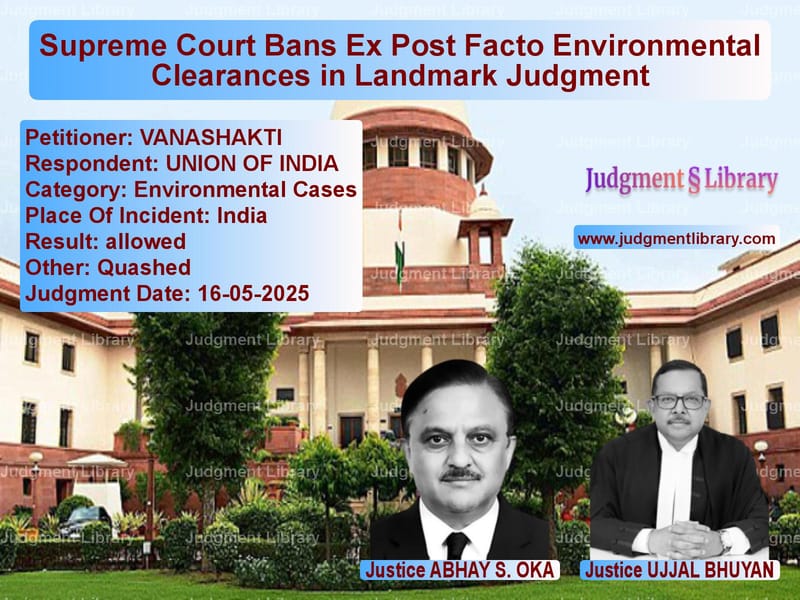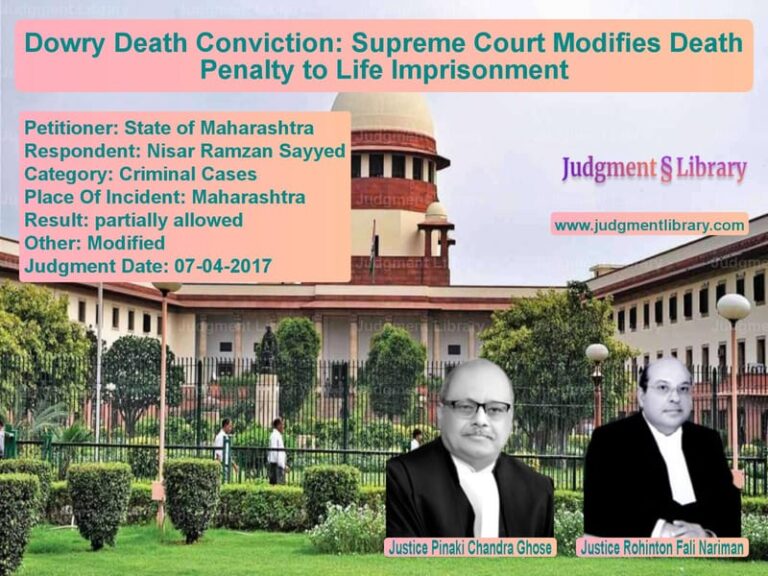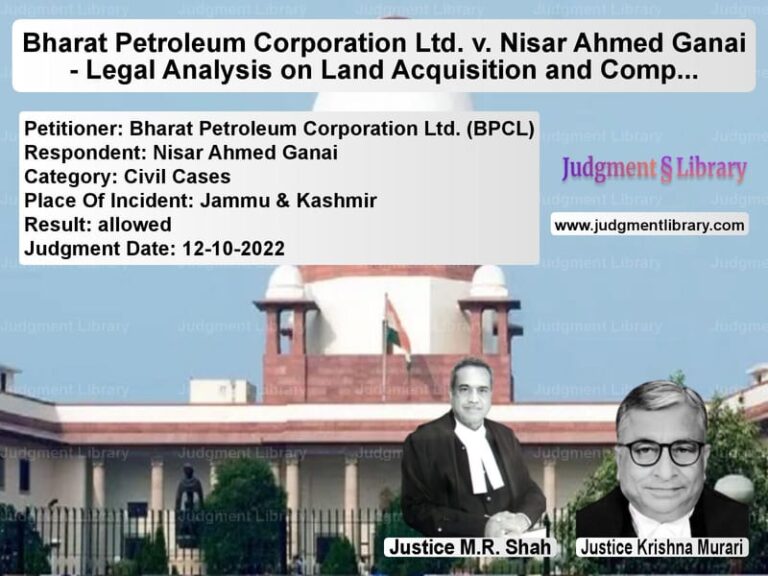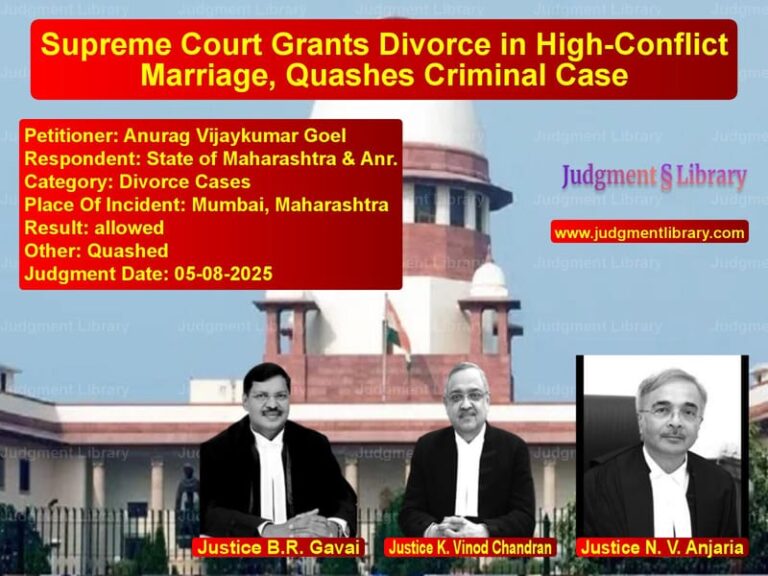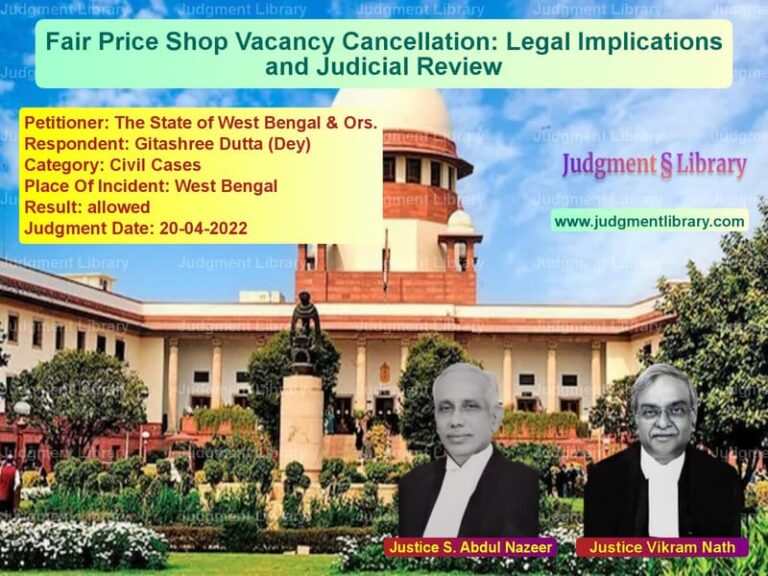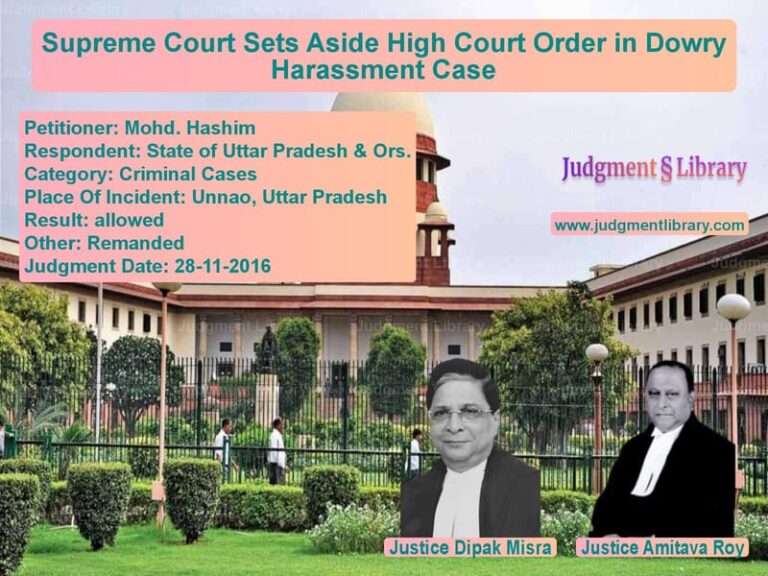Supreme Court Bans Ex Post Facto Environmental Clearances in Landmark Judgment
In a groundbreaking judgment that reinforces the fundamental right to a clean environment, the Supreme Court of India has delivered a powerful verdict striking down the practice of granting ex post facto environmental clearances to industries and projects that began operations without mandatory prior approvals. The landmark decision, delivered on May 16, 2025, represents a significant victory for environmental protection and establishes that the concept of retrospective environmental clearances is fundamentally incompatible with India’s environmental jurisprudence.
The case involved multiple petitions challenging the legality of the 2017 notification and the 2021 Office Memorandum issued by the Ministry of Environment, Forest and Climate Change (MoEFCC), which had created mechanisms for regularizing projects that had commenced operations without obtaining the mandatory prior Environmental Clearance (EC) under the Environment Impact Assessment (EIA) Notification of 2006. The petitioners, including environmental organization Vanashakti, argued that these measures effectively rewarded violators of environmental laws and undermined the very purpose of environmental protection legislation.
The Constitutional Foundation
The Supreme Court began by emphasizing the constitutional basis for environmental protection in India. The Court noted that “Part IV-A of the Constitution of India containing fundamental duties as set out in Article 51A was incorporated in the Constitution by the 42nd Amendment Act with effect from 3rd January 1977. Clause (g) of Article 51A provides that it shall be the duty of every citizen of India to protect and improve the natural environment including forests, lakes, rivers and wildlife, and to have compassion for living creatures.”
The judgment further reinforced that “This Court in several decisions has held that the right to live in a pollution free atmosphere is a part of the fundamental right guaranteed under Article 21 of the Constitution of India.” This constitutional framework formed the bedrock upon which the Court built its analysis of the challenged notifications.
The Environmental Legal Framework
The Court traced the development of environmental legislation in India, noting that the Environment (Protection) Act, 1986 was enacted fourteen years after the landmark 1972 Stockholm Conference. However, it took another twenty years for the government to issue the Environment Impact Assessment Notification in 2006, which mandated that certain categories of projects and activities “shall require prior environmental clearance from the concerned regulatory authority… before any construction work, or preparation of land by the project management except for securing the land, is started on the project or activity.”
The EIA Notification established a rigorous process for granting environmental clearances, including public hearings, screening, scoping, and appraisal to ensure that potential environmental impacts were properly assessed before projects could proceed. This precautionary approach was designed to prevent environmental damage rather than remedying it after the fact.
The Challenged Notifications
The 2017 notification created a mechanism for granting ex post facto environmental clearances to projects that had “started the work on site, expanded the production beyond the limit of the EC, or changed the production mix without obtaining EC.” This notification was purportedly a “one-time measure” to bring violators into compliance.
Read also: https://judgmentlibrary.com/auroville-township-plan-dispute-supreme-court-overturns-ngt-orders/
Subsequently, in 2021, the government issued an Office Memorandum establishing a Standard Operating Procedure (SOP) for dealing with violation cases, which effectively continued the practice of regularizing projects that had commenced without prior clearances.
The Court’s Legal Analysis
The Supreme Court conducted a thorough examination of previous jurisprudence on ex post facto environmental clearances. The Court heavily relied on its landmark decision in Common Cause v Union of India, where it had held that “the concept of ex post facto or retrospective EC is completely alien to environmental jurisprudence including the EIA notification.”
The judgment extensively quoted from the Court’s decision in Alembic Pharmaceuticals v. Rohit Prajapati, where it had been unequivocally stated that: “The concept of an ex post facto EC is in derogation of the fundamental principles of environmental jurisprudence and is an anathema to the EIA Notification… It is detrimental to the environment and could lead to irreparable degradation. The reason why a retrospective EC or an ex post facto clearance is alien to environmental jurisprudence is that before the issuance of an EC, the statutory notification warrants a careful application of mind, besides a study into the likely consequences of a proposed activity on the environment.”
The Court emphasized that “Allowing for an ex post facto clearance would essentially condone the operation of industrial activities without the grant of an EC. In the absence of an EC, there would be no conditions that would safeguard the environment. Moreover, if the EC was to be ultimately refused, irreparable harm would have been caused to the environment.”
Examination of the 2021 Office Memorandum
The Court conducted a detailed analysis of the 2021 Office Memorandum, rejecting the government’s argument that it did not provide for ex post facto clearances. The Court noted that while the OM cleverly avoided using the term “ex post facto,” its practical effect was the same.
The judgment explained that “Effect of grant of EC under clause (11) of 2021 OM will be grant of permission to complete the construction of the project, though construction had commenced without prior EC. Where the construction is already complete which is being used for processes etc., by grant of EC, the process/activities can continue. Thus, in effect, the EC granted under clause (11) of 2021 OM regularises something which was illegal with retrospective effect.”
The Court firmly stated that “The 2021 OM has been issued in violation of the decisions of this Court in the cases of Common Cause and Alembic Pharmaceuticals. Therefore, we have no manner of doubt that the 2021 OM which permits grant of EC is completely arbitrary and illegal.”
Environmental Realities and Constitutional Duties
The Court grounded its decision in the contemporary environmental challenges facing India, particularly the severe air pollution in Delhi and other major cities. The judgment poignantly observed that “Today, in the year 2025, we have been experiencing the drastic consequences of large-scale destruction of environment on human lives in the capital city of our country and in many other cities. At least for a span of two months every year, the residents of Delhi suffocate due to air pollution. The AQI level is either dangerous or very dangerous. They suffer in their health.”
The Court emphasized that “coming out with measures such as the 2021 OM is violative of fundamental rights of all persons guaranteed under Article 21 to live in a pollution free environment. It also infringes the right to health guaranteed under Article 21 of the Constitution.”
Strict Approach Towards Violators
The Supreme Court took a particularly stern view of project proponents who deliberately violated environmental laws. The judgment noted that “The EIA notification is of 14th September 2006. When the 2021 OM was issued, it was nearly 15 years old. Therefore, all project proponents were fully aware of the stringent requirements under the EIA notification.”
The Court emphasized that “Those who violate the law regarding obtaining prior EC are not only committing gross illegality, but they are acting against the society at large. The violation of the condition of obtaining prior EC must be dealt with heavy hands. In environmental matters, the Courts must take a very strict view of the violations of the laws relating to the environment.”
The Final Ruling
In its conclusive findings, the Supreme Court declared:
“a) We hold that the 2017 notification and the 2021 OM as well as all circulars/orders/OMs/notifications issued for giving effect to these notifications are illegal and are hereby struck down;
b) We restrain the Central Government from issuing circulars/orders/OMs/notifications providing for grant of ex post facto EC in any form or manner or for regularising the acts done in contravention of the EIA notification;
c) We clarify that the ECs already granted till date under the 2017 notification and the 2021 OM shall, however, remain unaffected.”
Broader Implications
This judgment represents a watershed moment in Indian environmental jurisprudence. By unequivocally rejecting the concept of ex post facto environmental clearances, the Supreme Court has reinforced the precautionary principle as a cornerstone of environmental governance. The decision sends a clear message that environmental laws cannot be treated as optional requirements that can be complied with after the fact.
The judgment also highlights the critical role of constitutional courts in protecting environmental rights and holding governments accountable for their duty to protect the environment. By framing the right to a clean environment as an integral component of the right to life under Article 21, the Court has elevated environmental protection to a fundamental constitutional imperative.
For industries and project proponents, this judgment serves as a stark reminder that compliance with environmental regulations is not merely a procedural formality but a substantive legal obligation that must be fulfilled before commencing operations. The Court’s refusal to grandfather existing violations demonstrates its commitment to ensuring that environmental laws are enforced rigorously and consistently.
The decision also has significant implications for sustainable development in India, affirming that environmental protection and economic development must proceed hand in hand, and that the former cannot be sacrificed for the latter. As the Court aptly noted, “Conservation of environment and its improvement is an essential part of the concept of development.”
This landmark judgment represents a crucial step forward in India’s environmental governance, strengthening the legal framework for environmental protection and reaffirming the constitutional commitment to safeguarding the environment for present and future generations.
Petitioner Name: VANASHAKTI.Respondent Name: UNION OF INDIA.Judgment By: Justice ABHAY S. OKA, Justice UJJAL BHUYAN.Place Of Incident: India.Judgment Date: 16-05-2025.Result: allowed.
Don’t miss out on the full details! Download the complete judgment in PDF format below and gain valuable insights instantly!
Download Judgment: vanashakti-vs-union-of-india-supreme-court-of-india-judgment-dated-16-05-2025.pdf
Directly Download Judgment: Directly download this Judgment
See all petitions in Environmental Cases
See all petitions in Public Interest Litigation
See all petitions in Judgment by Abhay S. Oka
See all petitions in Judgment by Ujjal Bhuyan
See all petitions in allowed
See all petitions in Quashed
See all petitions in supreme court of India judgments May 2025
See all petitions in 2025 judgments
See all posts in Environmental Cases Category
See all allowed petitions in Environmental Cases Category
See all Dismissed petitions in Environmental Cases Category
See all partially allowed petitions in Environmental Cases Category

